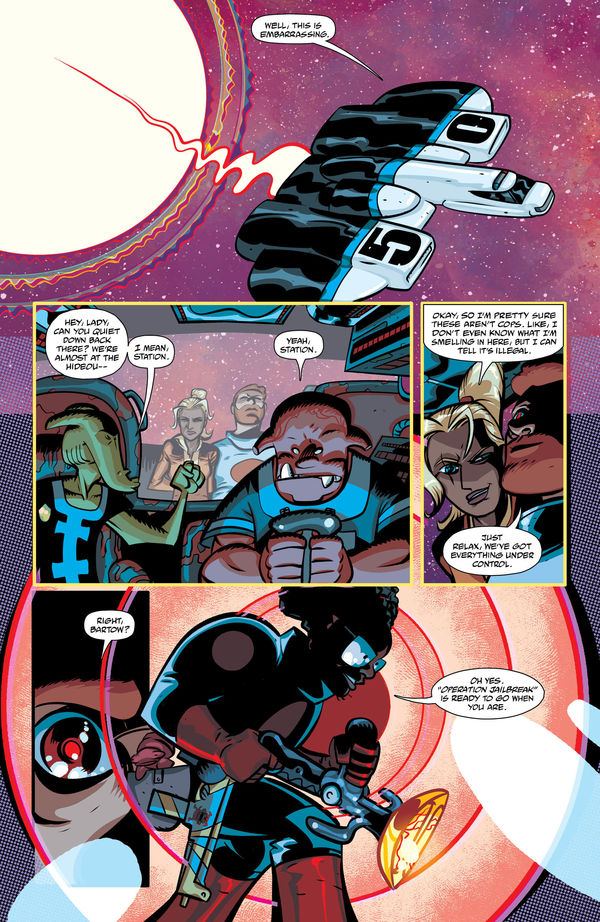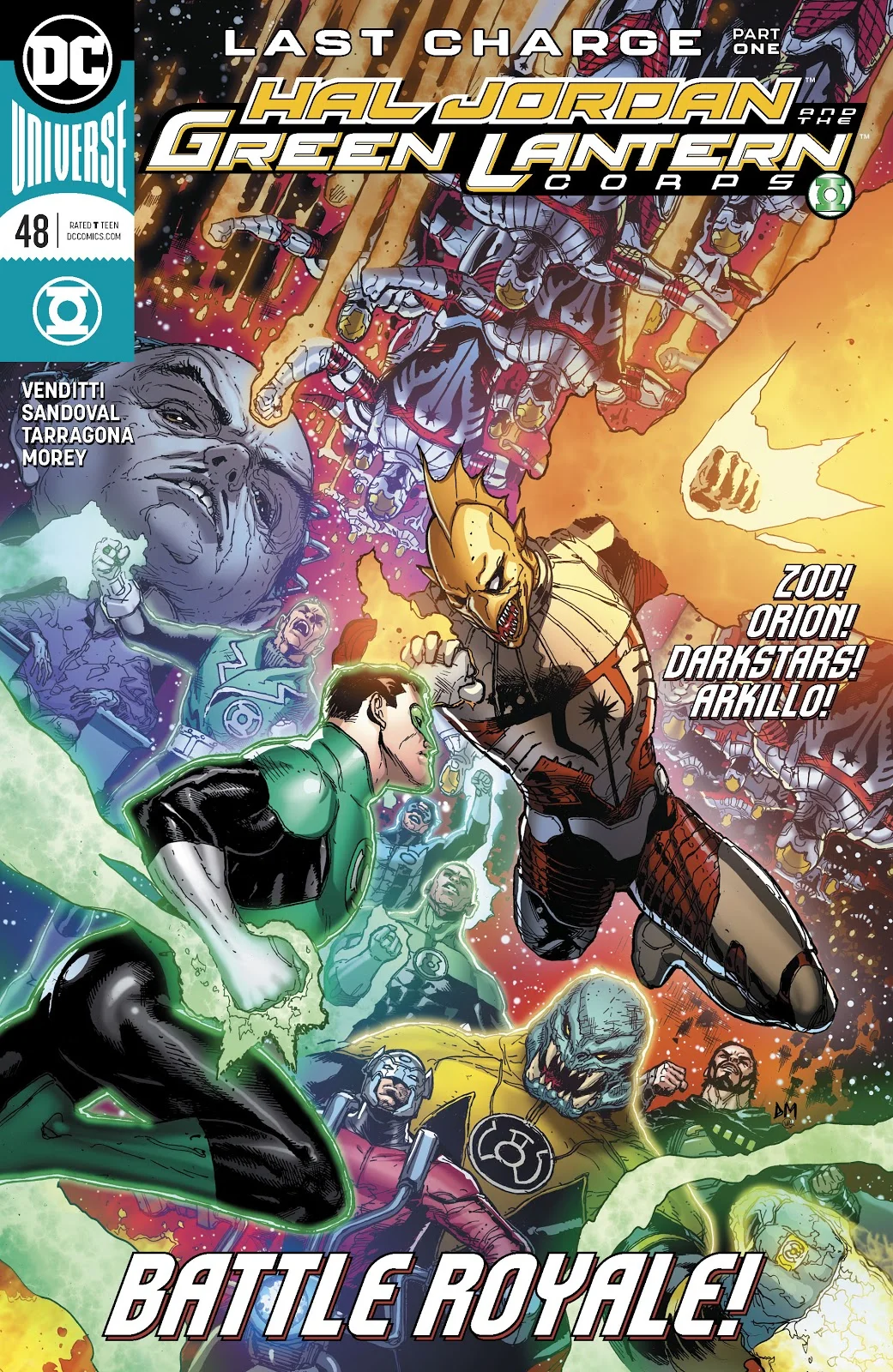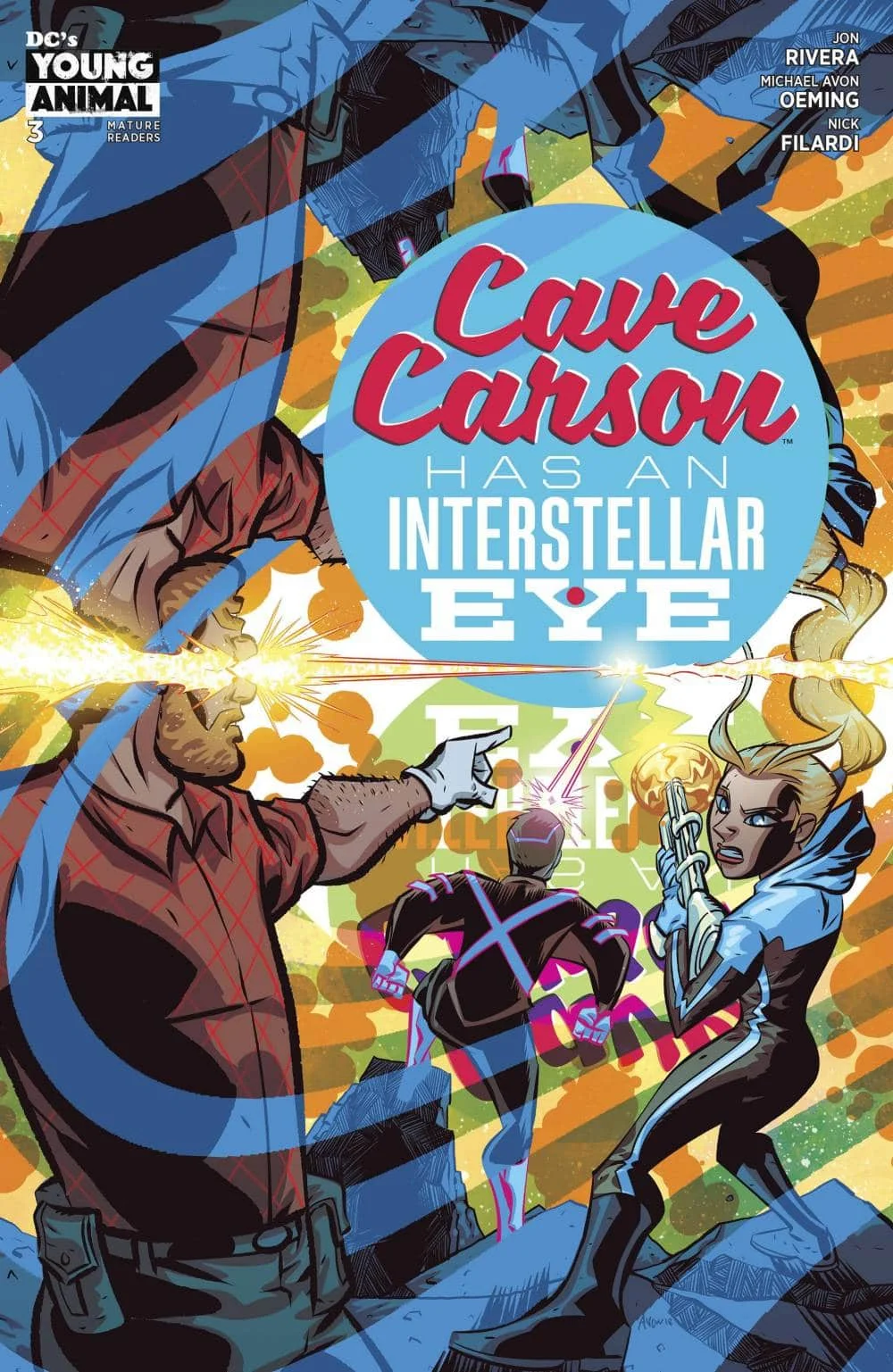Cave Carson Has An Interstellar Eye #5 // Review
Cave Carson Has An Interstellar Eye #5, by Jon Rivera, Michael Avon Oeming, Paul Maybury, Nick Filardi, and Clem Robins, sees Cave and company arrested and taken to another planet. What craziness awaits there? Last issue was the highlight of the miniseries so far. Can this issue match it?
As the “space police” from last issue take Cave, Chloe, and Bartow--who is hidden in Cave’s cybernetic eye ready to attack as soon as they arrive at their destination--to the planet Abraxa Elium, they are attacked by bounty hunters. Chloe realizes that the aliens holding them aren’t what they seem as well, and the three of them are able to escape, where they meet with an old friend who they thought was dead. This old friend decides to help them flee the planet, but are attacked by more bounty hunters, barely getting away before they are confronted by another blast from Cave’s past. In the back-up, Cave’s team breaks up when they can’t find hide nor hair of Bulldozer, and Cave describes his life after that point.
This one serves as an interesting point in the narrative. It’s the penultimate issue of this series, and it’s here that the main plot and the back up story intersect. It gives the back-up story a bit more narrative oomph. Up to this point, it was just an in-universe podcast by Cave and Chloe describing the dissolution of his old team and how he came to be the Cave readers saw at the beginning of Cave Carson Has A Cybernetic Eye, but the back-up is also really important to the reveal at the end of this issue, so it makes more narrative sense for it to be in the book than it did previously. Before, it was just like the other back-up in some of the Young Animal books: an entertaining little yarn at the end of the book, a nice cool down. Now, though, it takes on a bigger significance. If readers have been skipping it, though, they will miss out on why the end reveal is important. It’s a shame to think that readers may not have been reading, because it’s one of the best parts of the book. Whereas the main plot sometimes falls back on it’s trippy-for-the-sake-of-being-trippy storytelling, the back-up has captured a lot of the emotion that the main plot was missing until last issue. Paul Maybury’s art doesn’t really compare to Michael Avon Oeming. Maybury’s art has more of an indie sensibility to it. It’s not nearly as polished and doesn’t fall back on the trippy visuals, but it’s brimming with emotion. It’s simple in the best possible way and gets across what it needs to perfectly.
As for the rest of the main plot, it’s mostly chase after chase. There’s just enough exposition for things to make sense for readers. One of the more interesting concepts in this issue, and probably the best pure sci-fi concept in the series so far, is how the planet of Abraxa Elium works. It’s a refugee planet that is protected by a giant radioactive invertebrate called Prince Elium. The Prince’s radiation allows dead beings to live, resurrecting them from even constituent atoms. There’s also some novel uses of the tesseract space in Cave’s eye.
Oeming’s artwork keeps impressing. If a reader were to go through any of his pre-Young Animal work, they might not think that he would be capable of some of the great sci-fi designs he has put into every issue of this series so far, but they’d be wrong. Abraxa Elium is full of eye-popping design choices and the way Oeming does panel layouts is reminiscent of the way Andrea Sorrentino did them on Old Man Logan, where the panels take on shapes of parts of the story from the page before, or are arrayed in such a way that breaks the usual grid format that comics have embraced for the majority of their history. An unsung hero of this book for its entire run has been Nick Filardi, the colorist. His colors and the effects he uses throughout the run make Oeming’s hallucinatory pencils work, and, without him, this book wouldn’t be the visual treat its been for his run.
Over the last two issues, this book has improved immensely. The second and third issue was a decent sci-fi story, but it didn’t play into a greater plot and felt a little too reliant on being trippy. Last issue was a good one-and-done with a perfect emotional core, and this issue served as a link, not only back to the first issue, but also to the back-up story, while containing some cool sci-fi concepts and the same high-quality artwork that has graced the book since its debut. With the way its picked up in quality, it’s sad that readers will have only one more issue to enjoy it.









